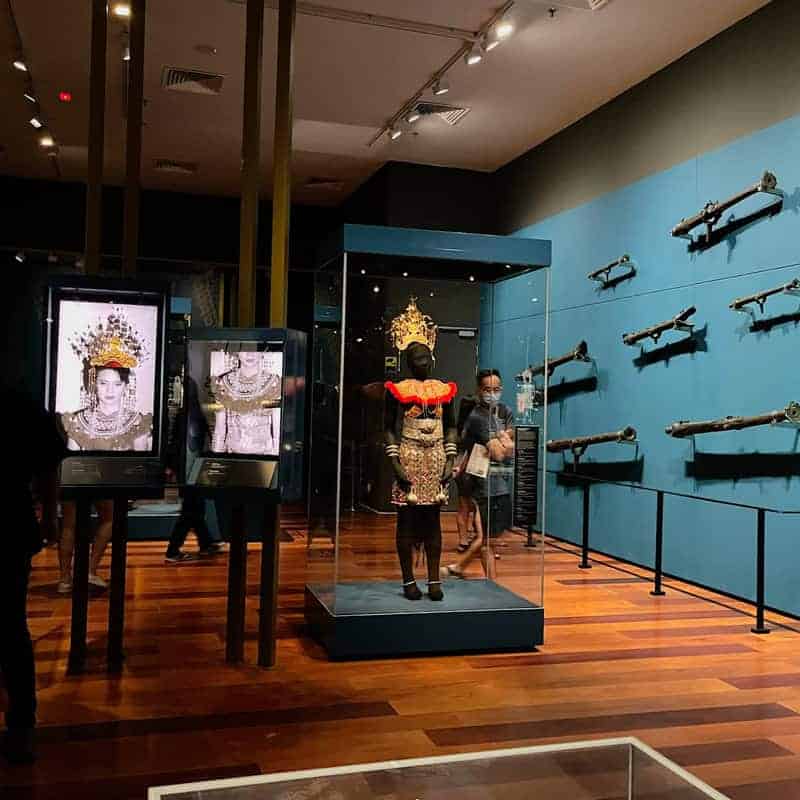Unraveling Customs: Borneo Cultures Museum in Focus
Unraveling Customs: Borneo Cultures Museum in Focus
Blog Article
Look Into the Interesting World of Borneo's Cultural Heritage: A Comprehensive Guide to the Cultures Gallery Experience
Submersing oneself in the elaborate tapestry of Borneo's social heritage belongs to starting a voyage through time and practice. The blend of indigenous people, standard handicrafts, fascinating performances, and historical narratives housed within the confines of the island's museums provides a glimpse right into a world including vibrant customs and extensive traditions. As site visitors go across with these databases of culture, they are bid to explore a realm where past and present intermingle, welcoming contemplation on the durability and splendor of Borneo's diverse heritage.
Native People of Borneo
Borneo is home to over 50 indigenous people, each with special social methods and customs that have actually been preserved for generations. Among these tribes are the Iban, understood for their intricate tattoos and conventional longhouses where numerous families reside.
These native tribes play a crucial function in keeping Borneo's abundant social tapestry. In spite of external influences and modernization, several tribes continue to promote their languages, customizeds, and beliefs. Site visitors to Borneo have the opportunity to involve themselves in the unique way of livings of these people through cultural trips, homestays, and community-based tourism efforts. By engaging with these native communities, site visitors can acquire a much deeper recognition for the variety and strength of Borneo's indigenous heritage.
Typical Handicrafts and Artefacts

One famous example of typical handicrafts in Borneo is the production of woven goods - Borneo Cultures Museum. Experienced weavers utilize all-natural fibers like rattan, bamboo, and pandan delegates produce complex baskets, mats, and accessories decorated with vibrant patterns that hold symbolic significances within the area
The art of woodcarving is one more significant aspect of Borneo's standard inventions. Artisans sculpt intricate layouts right into different kinds of timber to generate masks, sculptures, and music instruments that not just serve functional functions yet additionally hold social significance, frequently portraying mythology or spiritual ideas.
In Addition, Borneo is renowned for its beadwork, with craftsmens thoroughly crafting grains from materials like glass, seeds, and coverings to create fashion jewelry, apparel decorations, and ornamental products that showcase the region's vivid aesthetic traditions. These standard handicrafts and artefacts not only serve as substantial expressions of Borneo's social heritage however also offer insights into the areas' ideas, worths, and way of living.

Cultural Performances and Festivals
With a deep-rooted link to their social practices, the neighborhoods in Borneo come active via lively social efficiencies and events that celebrate their Full Report heritage. These occasions showcase the abundant variety of Borneo's ethnic teams, each offering special dances, music, and routines that have been passed down through generations. Among one of the most popular events is the Gawai Dayak, commemorated by the Dayak people to note the rice harvesting season. Throughout this event, conventional songs fills the air, detailed dances are done, and elaborate conventional outfits are put on. Another considerable occasion is the Pesta Kaamatan, commemorated by the Kadazandusun area to appreciate for the rice harvest. This festival features cultural performances, including the Sumazau dance, and traditional sporting activities like the bamboo dancing. Site visitors to Borneo can submerse themselves in these festivities, gaining a deeper understanding of the area's cultural heritage and experiencing the warm hospitality of its individuals. Cultural performances and events work as a lively suggestion of Borneo's abundant cultural tapestry and the significance of preserving these traditions for future generations.
Historic Stories and Artefacts
Discovering the historical stories and artifacts of Borneo provides a remarkable glance right into the region's rich past and cultural evolution. Borneo's historic tapestry is woven with varied impacts, mirroring the communications between indigenous people, Chinese investors, European colonizers, and Malay sultanates. The artifacts found in Borneo display this detailed background, varying from traditional crafts like intricate beadwork and woodcarvings to historical treasures such as ancient pottery and devices.
Among the most engaging elements of Borneo's historical narratives is the conservation of oral traditions gave through generations. These stories provide understandings into the ideas, customs, and every day lives of Borneo's inhabitants throughout the centuries. The artifacts unearthed from historical sites use concrete connections to these stories, allowing site visitors to witness the material society of previous societies firsthand.
Contemporary Cultural Preservation Efforts

Additionally, curricula and social exchange tasks play a critical duty in raising awareness concerning the value of preserving Borneo's unique social heritage. By engaging colleges, galleries, and the broader neighborhood in conversations and tasks that celebrate Borneo's diverse societies, conservation efforts can gain energy and assistance for long-term sustainability. Partnerships in between governmental bodies, non-profit companies, and regional neighborhoods are necessary in driving these conservation endeavors onward, making certain that Borneo's rich social heritage stays vibrant and valued for generations to find.
Conclusion
To conclude, the cultural heritage of Borneo is varied and rich, with aboriginal tribes, traditional inventions, cultural efficiencies, celebrations, historic narratives, and contemporary preservation efforts all adding to its originality and value. Visitors to Borneo's cultural galleries can acquire a much deeper understanding and gratitude of the area's cultural heritage, enabling a more immersive and informing experience.
Immersing oneself in the detailed tapestry of Borneo's cultural heritage is similar to getting started on a trip via time and practice.With a deep-rooted link to their social traditions, the communities in Borneo come to life via dynamic social efficiencies and festivals that commemorate their heritage. Social performances and celebrations offer as a dynamic suggestion of Borneo's rich cultural tapestry and the significance of maintaining these practices for future generations.
Furthermore, instructional programs and social exchange activities play a crucial role in increasing understanding concerning the importance of protecting Borneo's one-of-a-kind social heritage. Cooperations in between governmental bodies, non-profit companies, and neighborhood areas are important in driving these conservation ventures onward, guaranteeing that Borneo's abundant social heritage stays vivid and about his valued for generations to come.
Report this page